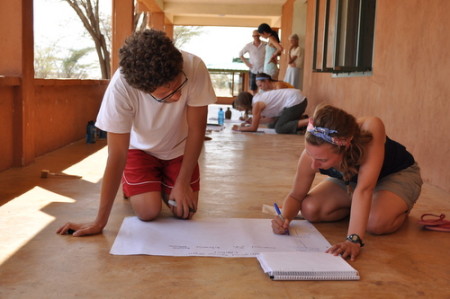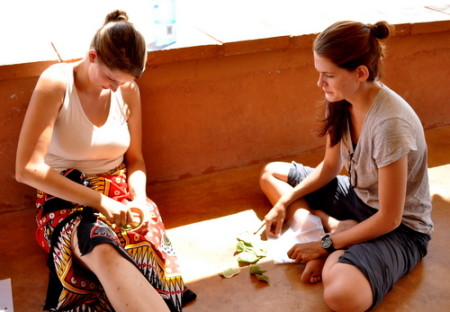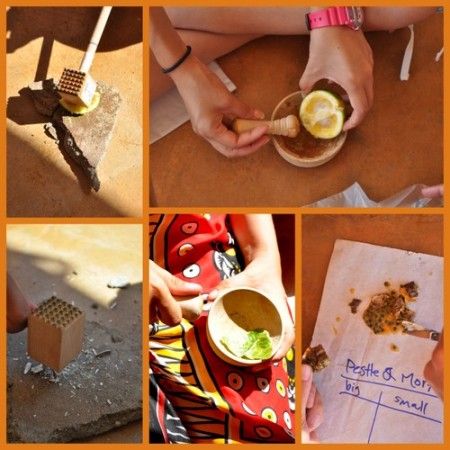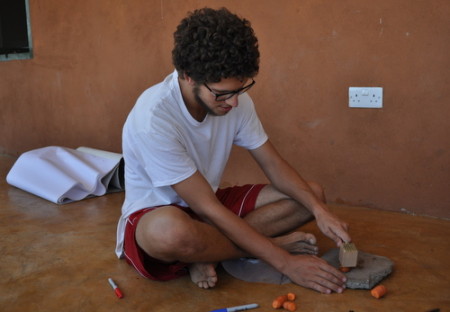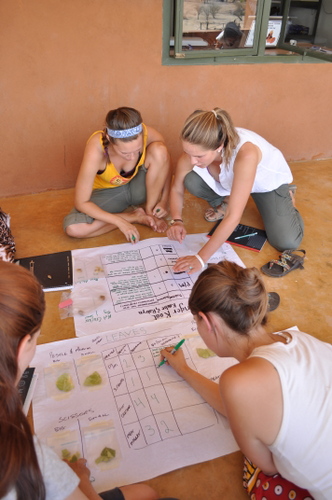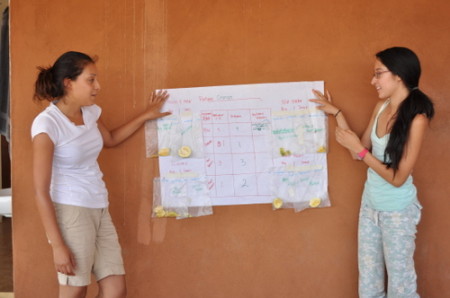Last week marked the beginning of the last module of the Spring 2014 Field School – Human Evolution, taught by Dr. Matt Skinner from University College London.
The module kicked off with a journey through the history of palaeoanthropology from the first fossils discovered to important scientific breakthroughs that enabled early scientists to start piecing together our evolutionary past.
On Tuesday, the students learned about the Miocene Apes, the early primates that would eventually evolve into us and other extant apes, and the debate as to where they originated from – Africa of Europe? They also leaned that the dental formulae and tooth morphology in primates has changed over time and is still different today between different primate taxonomic groups. Different types of teeth and different morphologies relate to different properties when it comes to processing food. In the afternoon, the students were able to test these properties during the practical. Feel free to try this at home.
You will need: Pestle and mortar (large and small); Meat mallet; Scissors (large handles, small handles); Nut crackers (large and small openings). And different food types: Passion fruit; Oranges; Leaves; Ginger; Nuts; Carrots.
The students split into 6 groups and each group was given a different food type. They then rotated through different tool stations and test their different processing properties. Each tool station had tools of different sizes to represent the sexual dimorphism that is present in many extant and fossil primates and often also has implications in terms of chewing force. For the meat mallet, the students held it at different positions – holding it close to the head, for example, implies less force when striking.
The students also had to prepare presentation sheets with their predictions and then the actual results.
At the end of the exercise each group presented their findings to the class. Robyn and Kailie found that their ginger was more efficiently processed when using the meat mallet, although the “smaller” meat mallet was not as effective as the “large” one. Sarah and Rob’s carrot was most effectively smushed using the meat mallet, while the scissors were the best at processing Janina and Abdi’s passion fruit as well as Kate and Erica’s leaves.
Angela and Carolina who were assigned to the sunflower seeds found that when crushing the seeds with the shell intact, the nut cracker wast the most effective at removing the shell. However once the shells had been removed, the meat mallet proved the most efficient at processing the seeds. The fact that there was a difference in tool processing efficiency between the seeds with shell and without shell clearly shows how different types of teeth can be used of processing food at different stages – one type with an edge and a lot of force to crack the shell and extract the seed and the other with an evenly cusped surface to break the seed down into smaller pieces.

